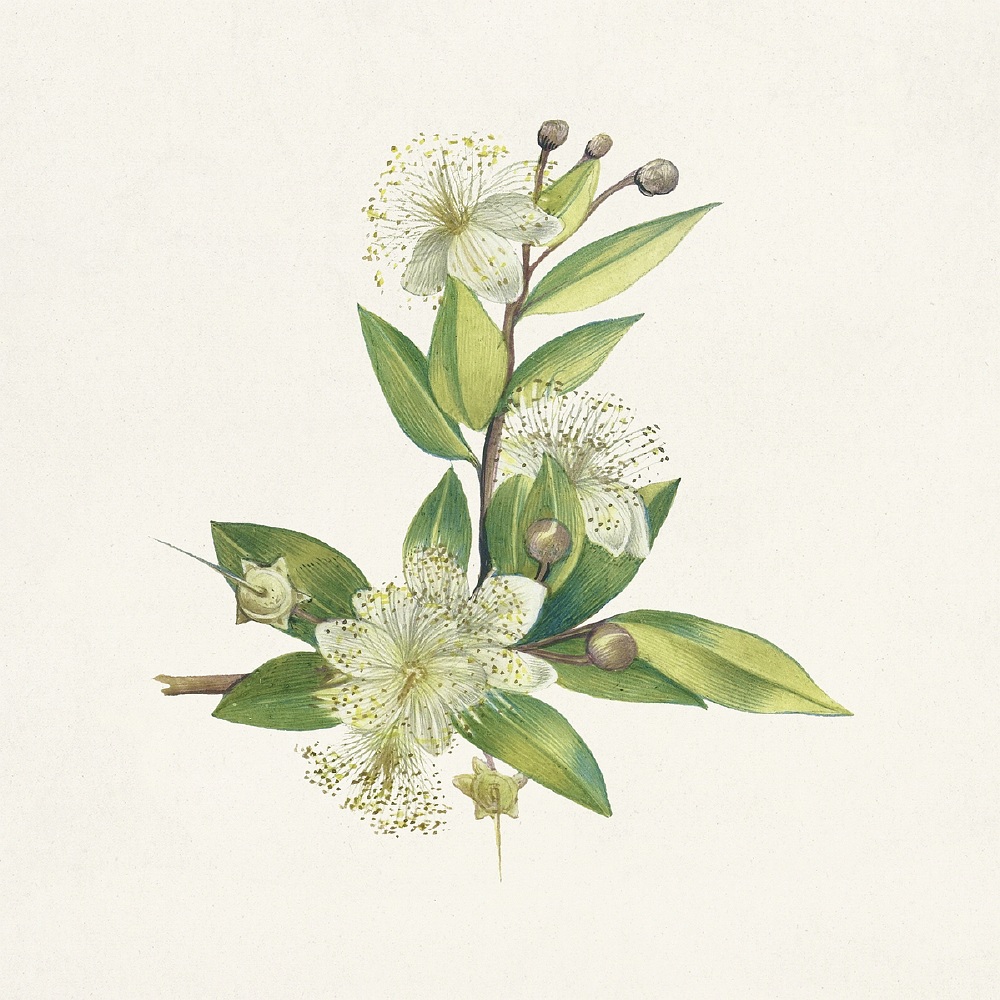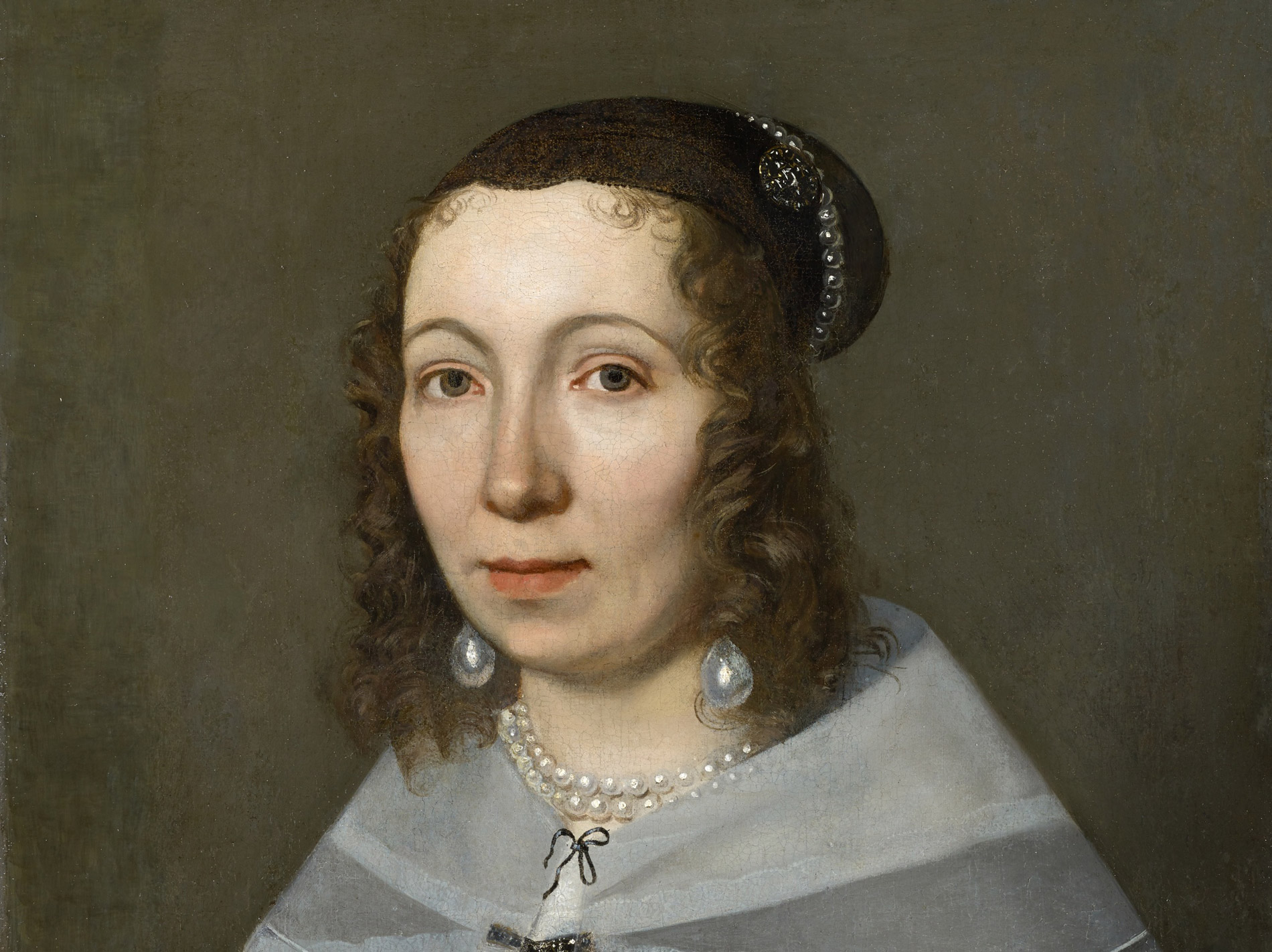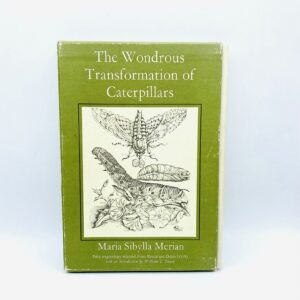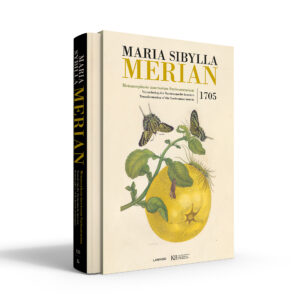Maria Sibylla Merian was born in Frankfurt on 13 April 1647, towards the end of the Thirty Years War (1618-1648). She was the youngest daughter of Matthaeus Merian the Elder (1593-1650), who after the death of his first wife married Johanna Sibylla Heim (ca. 1620-1690). Matthaeus Merian was originally from Basel and had trained in Zürich as an engraver. He then set out on his travels to develop fur-
ther in that craft. Eventually he settled in the mercantile city of Frankfurt am Main, where he applied for a job in the business run by engraver, printer and publisher Johan Theodor de Bry (1561-1623), son of engraver Theodor de Bry (1528-1598), who founded the company. A little over a year later Matthaeus took charge of the business and married De Bry’s daughter.
Beginning in 1590 the De Brys, father and son, published a multi-volume work called India Occidentalis, full of beautiful and intriguing engravings about the Americas. It was an overwhelming success and Matthaeus Merian the Elder republished the series in 1630. Maria Sibylla would undoubtedly have seen it, and it must have stimulated the passion for travel that she later developed. What
child would not grow intensely curious on seeing all those pictures of wonderful regions, with their strange peoples, customs, plants and animals?
Under Merian the Elder’s leadership the business flourished. From the moment his two eldest sons Matthaeus Merian the Younger (1621-1687) and Caspar Merian (1627-1686) joined the firm, it was able to increase production. Series of prints of cities and landscapes in Central Europe were issued, as well as books, many of them illustrated, on history, travel and theological issues. Merian the Elder was a Calvinist, but he could not be open about that in Frankfurt, so his children were baptized as Lutherans, thereby joining the official church of that international trading city. At the end of his life Merian the Elder was troubled by various health problems. Taking his family with him, he travelled to the mountainous regions and health resorts near Swalbach, north-west of Frankfurt, where he died on 19 June 1650. Maria Sibylla was three years and a few months old withe time. In her entomologieal diary, now telerred to as her study journal, she writes that later; when she was in her thirties and helping her motherin Frankfurt, she went to Swalbach regularly to look for caterpillars and bulterlies. Maria Sibylla Merian thus came from a milieu that was both artistic and commercial. Her mother remarried a little over a year after her first husband’s death. Her new husband was a painter of flowers, Jacob Marrel (1614-1681) from Frankenthal. His native city had suffered terribly at the start of the Thirty Years War and the Marrel family had fled to Frankfurt after surviving some years of military conflict. There Jacob was apprenticed to Georg Flegel (1566-1638), in those days one of the best German painters of still lifes, flowers and birds. His eye for the tiniest details and his carefully balanced use of colour, which his watercolours demonstrate to splendid effect, must have inspired Maria Sibylla.

Put it was her stepfather who really taught her the trade: how to grind pigments, prepare canvasses and vellum, and colour prints layer by layer. She was probably mainly taught watercolour techniques, because in many German cities women were not allowed to sell works painted in oils. It would therefore have seemed more sensible for a woman to train in the use of transparent and opaque watercolours. Jacob Marrel had other pupils too, such as Johann Andreas Graff (1636-1701) from Nümberg. After completing his training, Graff made a long journey to Italy and devoted himself to architectural drawing. On his return he married Maria Sibylla. She was eighteen years olds. In addition to her stepfather, others who helped to develop her artistic skills included Maria Sibylla’s half-brothers Matthaeus and Caspar Merian, who had taken over their father’s business. They would have taught her to engrave and to etch. Matthaeus was also a well-known portrait painter who moved in aristocratic circles and had an extensive international network. Caspar specialized in prints and was an excellent engraver, making series of prints for a publishing house depicting ceremonial processions and state visits. Matthaeus worked for the Count of Nassau-Idstein, as did painter Johann Walther (1604-ca. 1676) from Strasbourg, who recorded on vellum the unusual plants in the gardens around the count’s castle. Merian must have looked at Walther’s work a great deal. She probably even helped him in his studio in the castle. One of Walther’s albums, now held in Paris, features one of Merian’s first watercolour studies right a the start, signed and dated 1665. It shows a pomegranate bush in its different stages, from bud and blossom to the ripe fruit.
Her most famous work: Metamorphosis Insectorum Surinamensium
As far as the plants are concerned, the text and images in Metamorphosis insectorum Surinamensium contrast markedly with those of the Raupen books. Merian provides information about how the roots, leaves or fruit can serve as food and drink and writes about their medicinal effects. In her texts she frequently refers to the native population, the Amerindians, building upon information provided by botanists who were also medical experts, such as Willem Piso (1611-1678) and Georg Markgraf (1610-1644). Her contacts with the Amsterdam physician and botanist Caspar Commelin (1668-1731) will no doubt have spurred her on. Below her text he comments on the plants and refers to other medical practitioners who were also botanists and had already described the same species. Shortly after their return, Dorothea Maria married surgeon Philip Hendricks from Heidelberg, although the marriage was destined to be brief. They had one child, who died young. It seems probable that she was a widow by 1707: the funeral register in the Amsterdam City Archives for that year records the death of one “Philip Hendrickse”, living between the Kruisstraat and the Spieghelgracht.
Although Dorothea Maria is described as the wife of Philip Hendricks in Merian’s will of 1711, it seems he was no longer alive at that time. In any case no reference to children born after 1707 can be found in the register of births and deaths. On 2 October 1702 Merian wrote in a letter to physician Johann Georg Volkamer (1662-1744) in Nümberg that she intended to complete within the next two months all the illustrations for her book on vellum in large folio – at least, if she remained healthy. This indicates that in a single year she produced sixty compositions with some hundred species of insects, including their metamorphosis, along with some reptiles and amphibians “as decoration’. The watercolours then had to be engraved in copper to enable their publication (see the contribution by Hans Mulder and Marieke van Delft). Merian engraved and etched three of the images herself (Plates 11, 14 and 35). The rest were commissioned from renowned engravers. Did the making of the prints take too much time or was Merian dissatisfied with the quality of her own work? Compared to the prints by other artists, hers are certainly not the most attractive. Her two daughters undoubtedly helped their mother to create the illustrations. Johanna Helena specialized in botanical drawing, while Dorothea Maria probably concentrated on the reptiles, amphibians and ants (Plates 4, 5, 18, 46, 56 and 59). Merian writes about Plate 4 and in her letters that she could make another book solely about these water and land animals.

Metamorphosis insectorum Surinamensium opens with two plates showing a pineapple, one in an unripe state and the other fully ripe. The pineapple was the signature image of South America. The plant was already being grown in the gardens of a number of collectors and at the Hortus Botanicus in Amsterdam, but of course the fruits did not become nearly as large, yellow and juicy as they did in Suriname. In the first plate the pineapple is surrounded by cockroaches, an everyday evil in the tropics. Was this a message? Anyone looking at the composition of the plates in Metamorphosis insectorum
Surinamensium will see that they are quite different from those of the two Raupen books. In the Suriname book Merian shows more verve, more audacity, more colour. The proportions of plant and animal are still not the way they are in reality, since even in the large folio format the plants, often trees, are too bulky, but the insects are life-sized. Where there was enough room on a leaf she would add a particularly large beetle such as the harlequin beetle, or a long-horned beetle, snake or lizard (Plates 23, 28, 48 and 46). In the Russian Academy of Sciences in St. Petersburg is a drawing showing an identical beetle and other insects without context or metamorphosis. The page was sold to Peter the Great at the end of Merian’s life, along with several similar watercolours. For Merian these will have been model images. The creatures no doubt came from her own collection of insects or reptiles and amphibians preserved in alcohol. The harlequin beetle was large, with a striking pattern on its body, and it was a favourite among collectors, who were enamoured of anything strange, such as the Pipa pipa (Plate 69) with its offspring on its back. Collections focused on special qualities and apparently miraculous stories about the creature concerned, such as that of the lantern fly (Plate 49). Insects were arranged in the cabinets of those days by colour, shape and pattern, and Merian will not have arranged them any differently. In the Natural History Museum in London, parts of the insect collection belonging to apothecary James Petiver (1663-1718) have been preserved. He negotiated with Merian on behalf of collector Hans Sloane (1660-1753). In his collection it is clear how colour, shape and pattern formed the basis for classification and arrangement, but Merian wanted to create images that showed an insect’s development and behaviour. In a letter to Petiver of 1705 she urgently requests him not to send any more insects without a context. She also writes that she told Frederik Ruysch the same thing when he gave her insects.
The sixty plates in the book differ in their composition. It is sometimes slightly stiff (Plate 23, 56), sometimes rather crammed or sparse, sometimes showing the stalk or twig perpendicular to the image, sometimes diagonal. The work is clearly a collaborative project by the three women, supervised by Merian. She depicted the insects with a sharp eye for the tiniest details and with unparalleled precision. Johanna Helena’s style is graceful, and her leaves and stalks fill the page, as demonstrated by Plate 12, where the bunch of bananas is set on a diagonal, the stamens are curly and the petals bright red. A similarly powerful composition is to be found in the plate showing the “beautiful biggest lemons”, and in those of a grapefruit and of a papaya sliced in half (Plates 28, 29, 40). Even before her departure for Suriname, Merian had made a signed picture of the burst-open pomegranate with flower bud and several leaves that is shown in Plate 9. It may be that Johanna Helena copied it and used it in a composition of her own.
The women often made copies. Parts of a branch bearing figs on Plate 33 are exactly the same in the third caterpillar book of 1717 as in an extra plate in the second edition of Metamorphosis insectorum Surinamensium of 1719. A notable feature of the work of Merian and her daughters are the holes in leaves caused by ravenous slugs, caterpillars and beetles. They represent both visible reality and a moral message: voracious caterpillars and other bloodless creatures cause damage to God’s creation, but after a sober and virtuous life one can rise up to God like a butterfly.
Also interesting, this unique animated video about Maria Sibylla Merian




